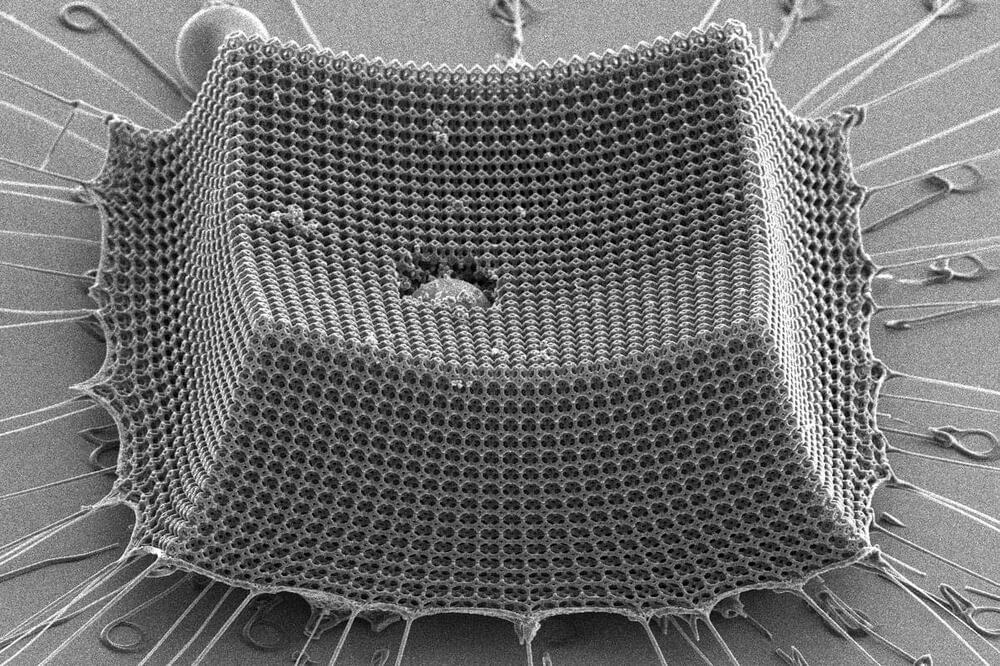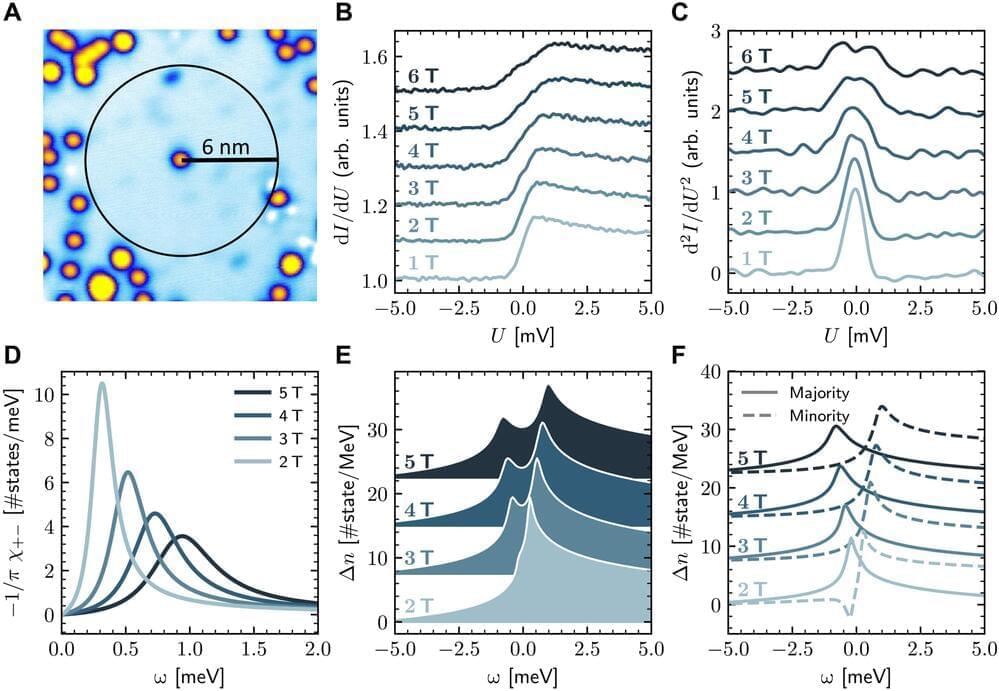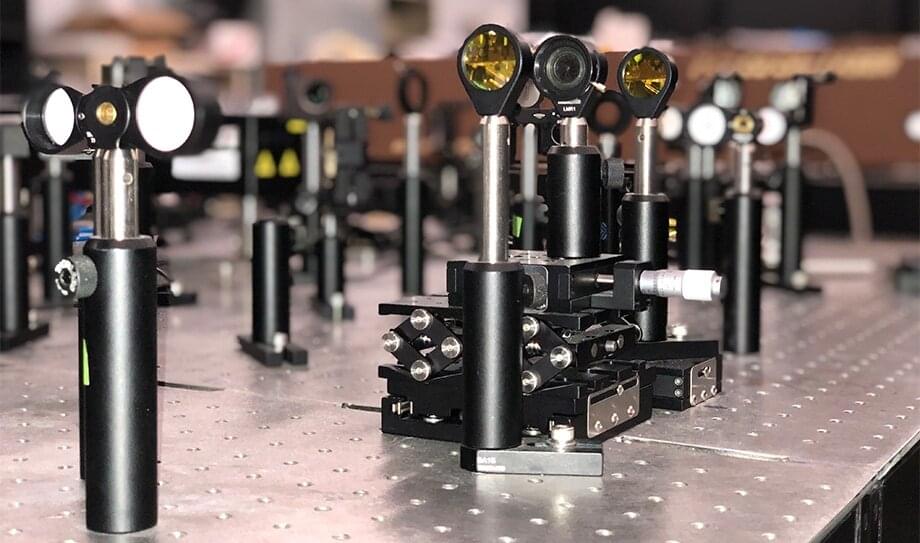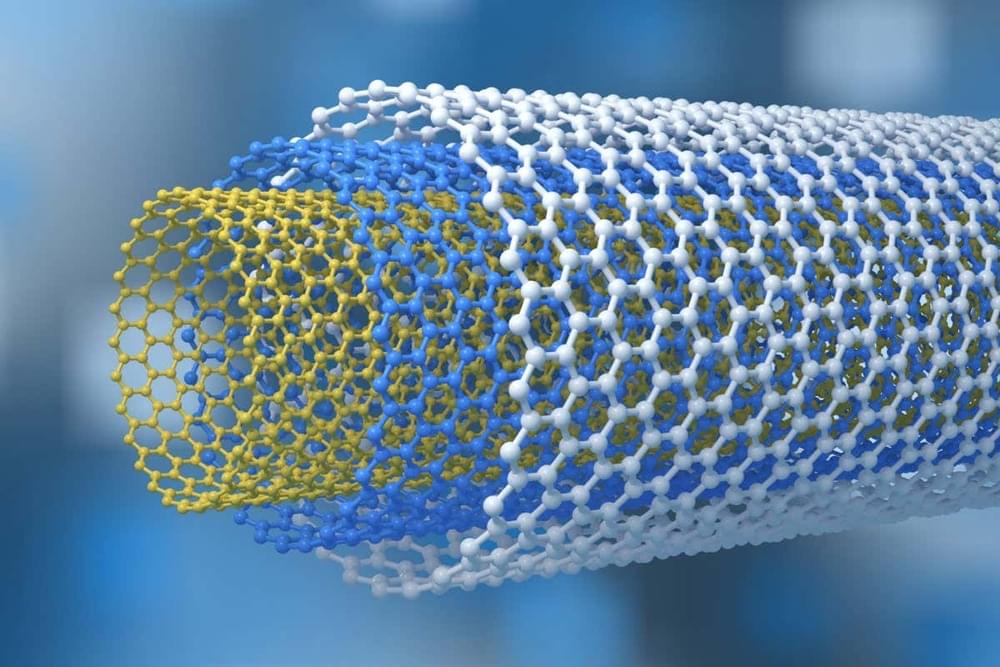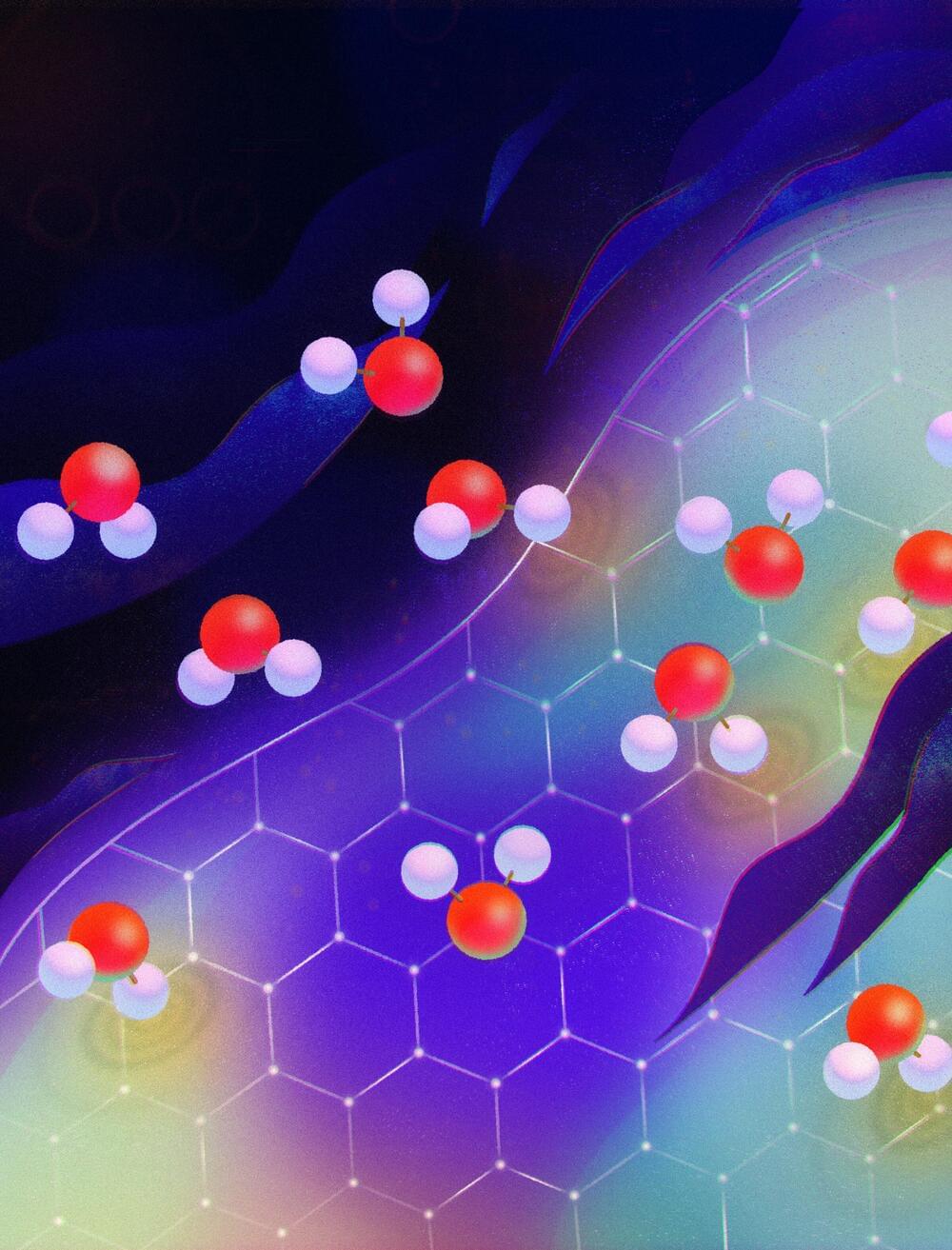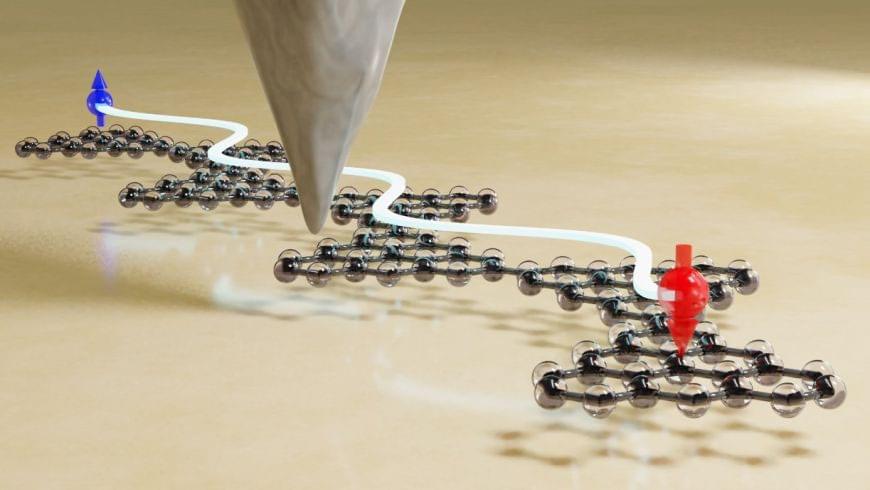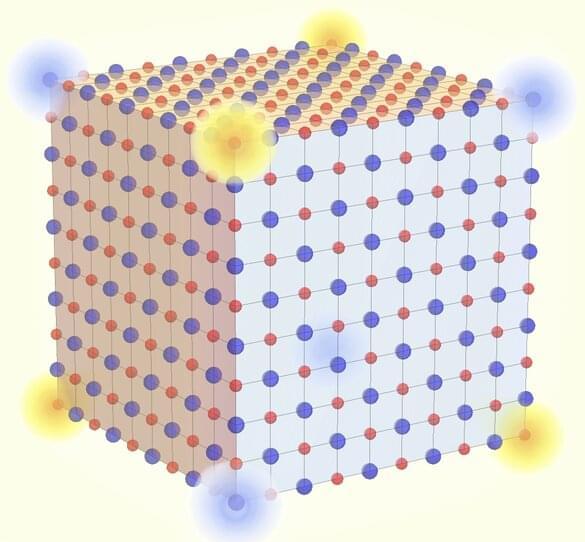Feb 9, 2022
Scientists develop new thermofluidic process for lab-on-a-chip applications
Posted by Shubham Ghosh Roy in categories: electronics, nanotechnology
Researchers at Leipzig University have succeeded in moving tiny amounts of liquid at will by remotely heating water over a metal film with a laser. The currents generated in this way can be used to manipulate and even capture tiny objects. This will unlock groundbreaking new solutions for nanotechnology, the manipulation of liquids in systems in tiny spaces, or in the field of diagnostics, by making it possible to detect the smallest concentrations of substances with new types of sensor systems.
The findings are described in an article recently published in Nature Communications (“Hydrodynamic manipulation of nano-objects by optically induced thermo-osmotic flows”).
Illustration of a gold nanoparticle trapped near a locally heated gold surface by hydrodynamic and van der Waals forces. (Image: Martin Fränzl, Universität Leipzig)


